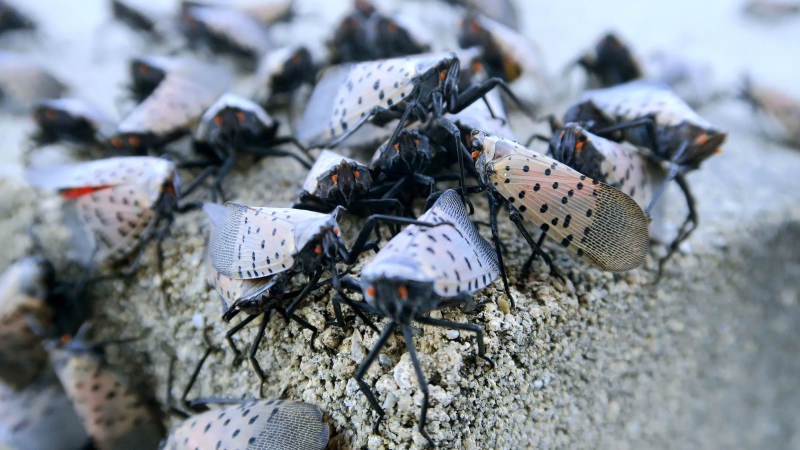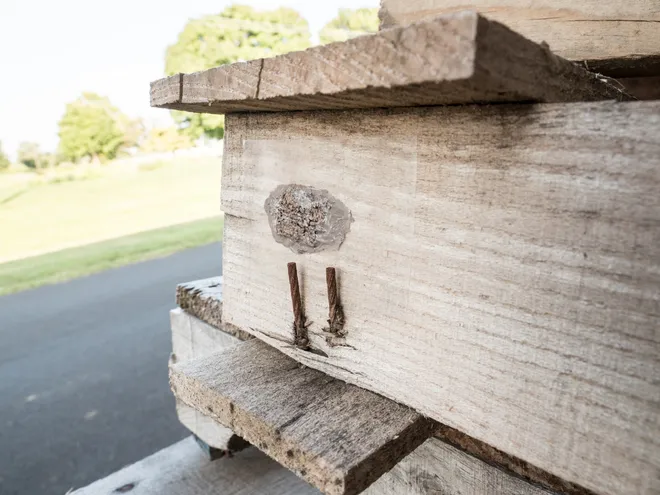If you see this, destroy it: USDA says to 'smash and scrape' these large invasive egg masses
The Department of Agriculture wants residents to be on the lookout for spongy masses growing outdoors "to help stomp out invasive pests this spring."
The spongy masses are the eggs of the spotted lanternfly and spongy moth, two "economically and environmentally destructive invasive insects," USDA said in a notice sent out earlier this month.
The masses can attach to and travel unnoticed on trucks, cars, trains, planes, and items people leave outdoors and then move to other areas, USDA said.
“Invasive insects and plant diseases, such as the spotted lanternfly, spongy moth, citrus greening, and many others, cost the U.S. an estimated $40 billion each year in damages to crops, trees, and other plants,” Kathryn Bronsky, national policy manager for the spongy moth at Animal and Plant Health Inspection Service (APHIS) said. “Together, we can make a difference."

What do these masses look like?
Spotted lanternfly egg masses are flat and mud-like, according to USDA. Spongy moth egg masses are fuzzy, spongy, and cream or brown-colored.

How to remove the egg masses
USDA recommends "smashing and scraping" the masses and putting them into a plastic bag and sealing it. The bag should then be thrown away in municipal trash.
Additionally, the agency said pressure washing is another effective way to remove the masses from hard, outdoor surfaces.
The agency says to watch out for the masses during late fall, winter, and early spring, and they can be found on outdoor surfaces like tree bark, cars, and items kept outside.
“When you find them, remove them to keep them from hatching in the spring, or worse, hitchhiking on the cars we travel in, or the firewood and outdoor gear we move to new places,” said Matthew Travis, USDA APHIS national policy manager for the spotted lanternfly.
The spotted lanternfly is currently found in 17 states, while the spongy moth has been found in 20, USDA said. The agency said it is important to prevent the spread of these species to new states.
The USDA offers other tips for limiting the spread of the insects, including:
- Review guidance posted by your state's agriculture departments if you live in quarantine areas for either pest.
- Check vehicles and belongings for pests if you are passing through or leaving a quarantine area for spotted lanternflies or spongy moths.
- If you are moving outdoor furniture, a recreational vehicle or camping equipment, check for the egg masses.
- Don’t move untreated firewood to new places. It can easily introduce invasive pests that kill or defoliate forests. Source firewood where you will burn it or buy certified, heat-treated firewood before you travel.
- If you live in an area where these pests are not established and see a spotted lanternfly or a spongy moth in any of their life stages, please report the sighting to your state’s department of agriculture.
Disclaimer: The copyright of this article belongs to the original author. Reposting this article is solely for the purpose of information dissemination and does not constitute any investment advice. If there is any infringement, please contact us immediately. We will make corrections or deletions as necessary. Thank you.






